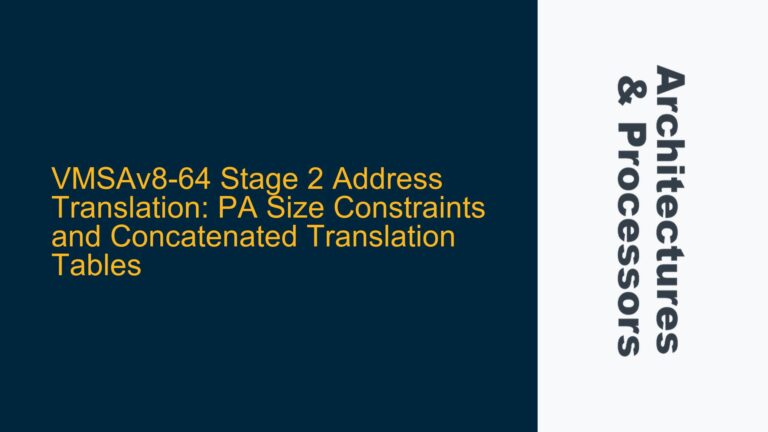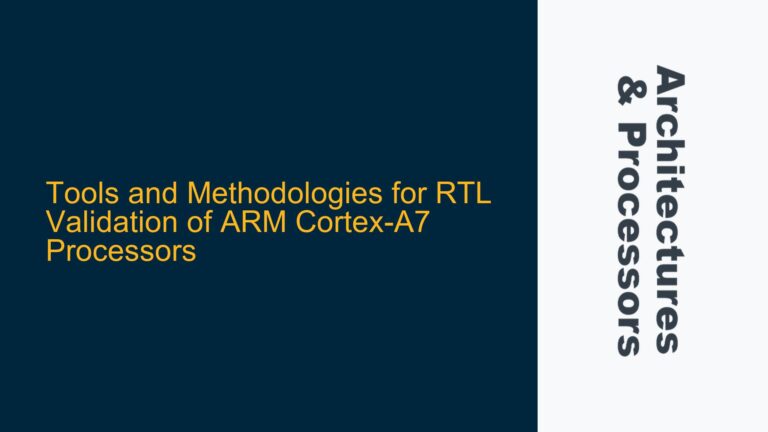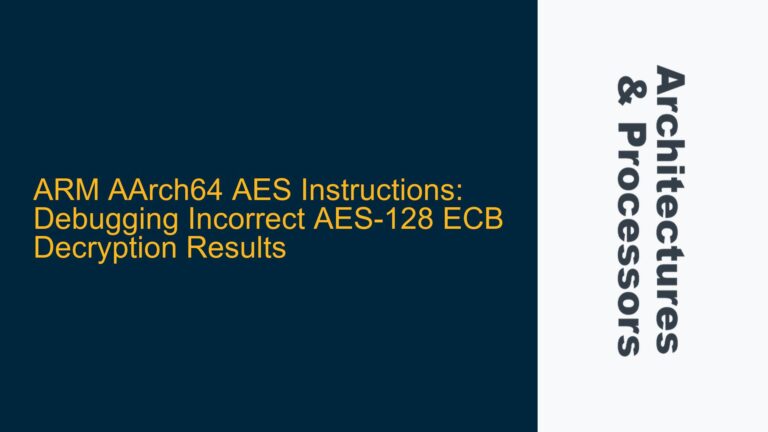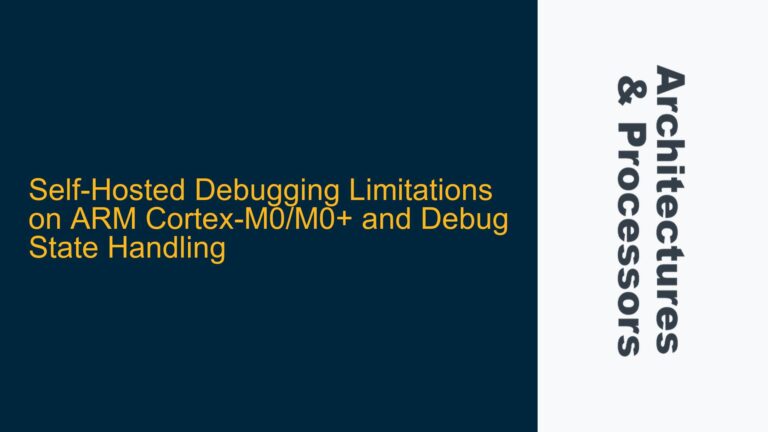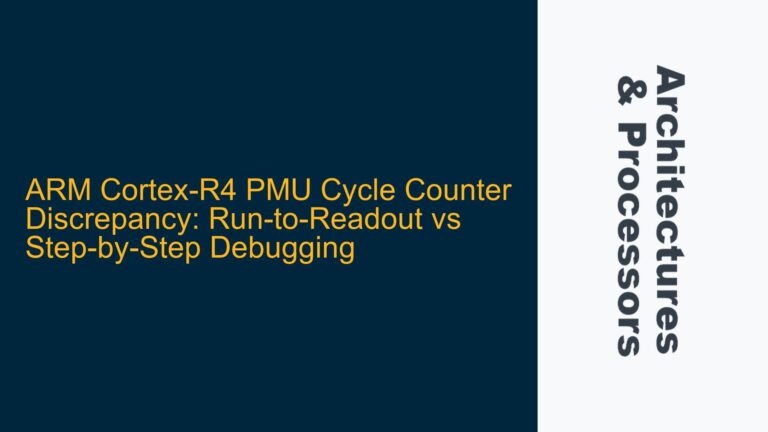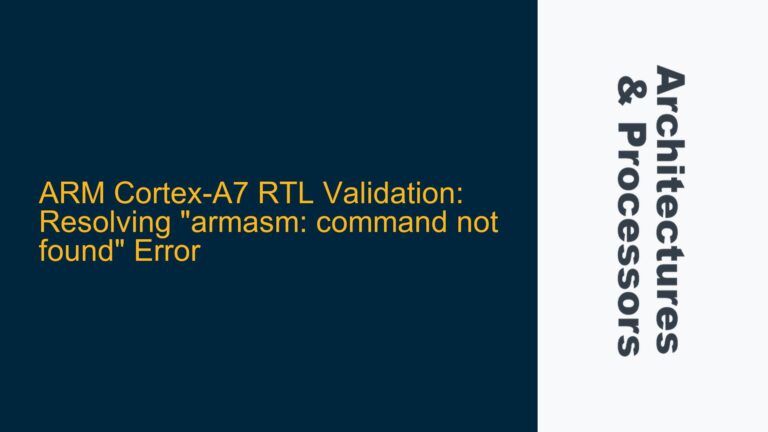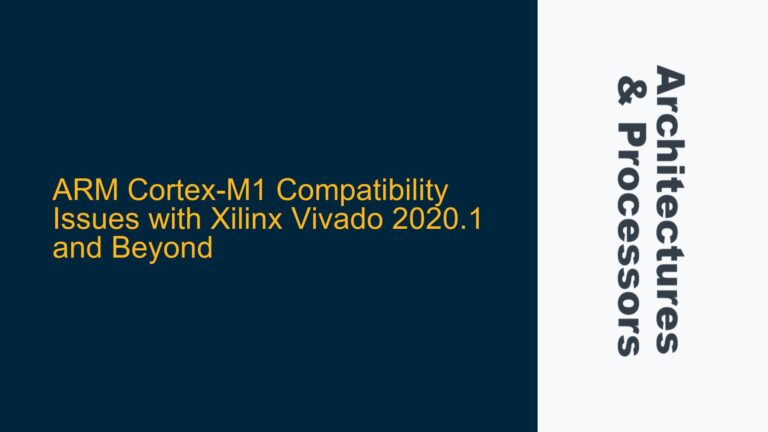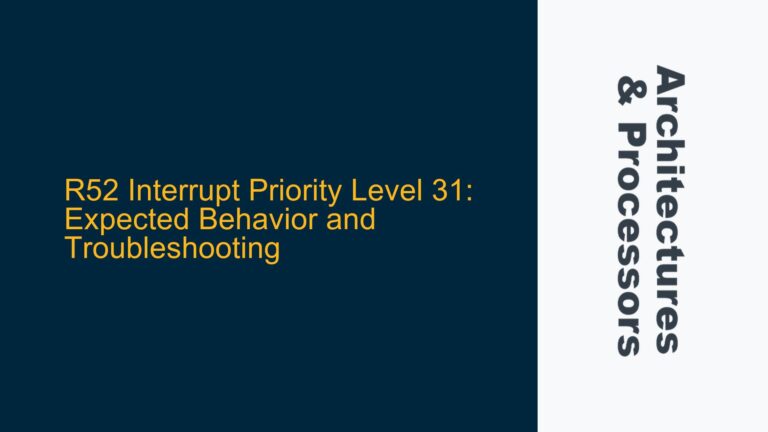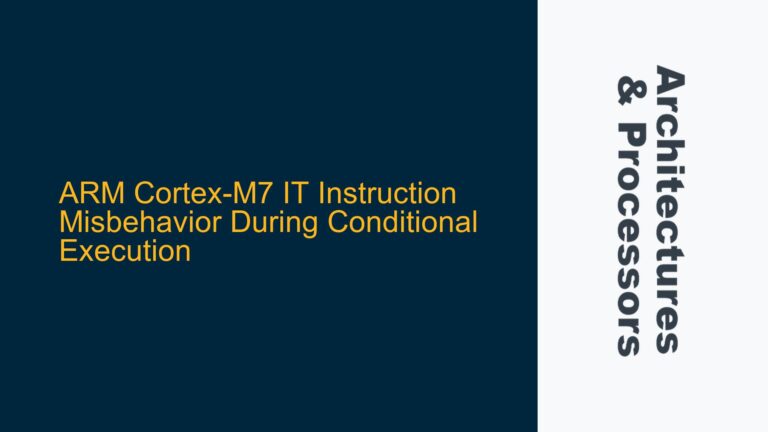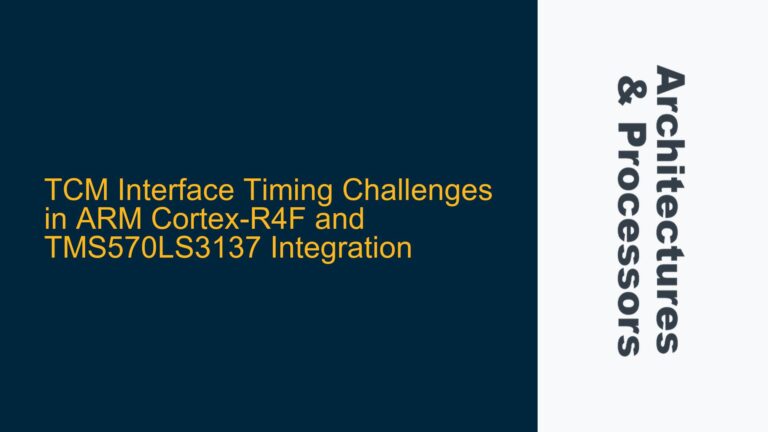VMSAv8-64 Stage 2 Address Translation: PA Size Constraints and Concatenated Translation Tables
ARM Cortex-A Series VMSAv8-64 Stage 2 Translation Regime: PA Size Implications The VMSAv8-64 architecture, used in ARM Cortex-A series processors, implements a two-stage address translation mechanism for virtualization. Stage 2 translation, managed by the hypervisor, maps Intermediate Physical Addresses (IPAs) to Physical Addresses (PAs). The Physical Address (PA) size supported by the system plays a…
